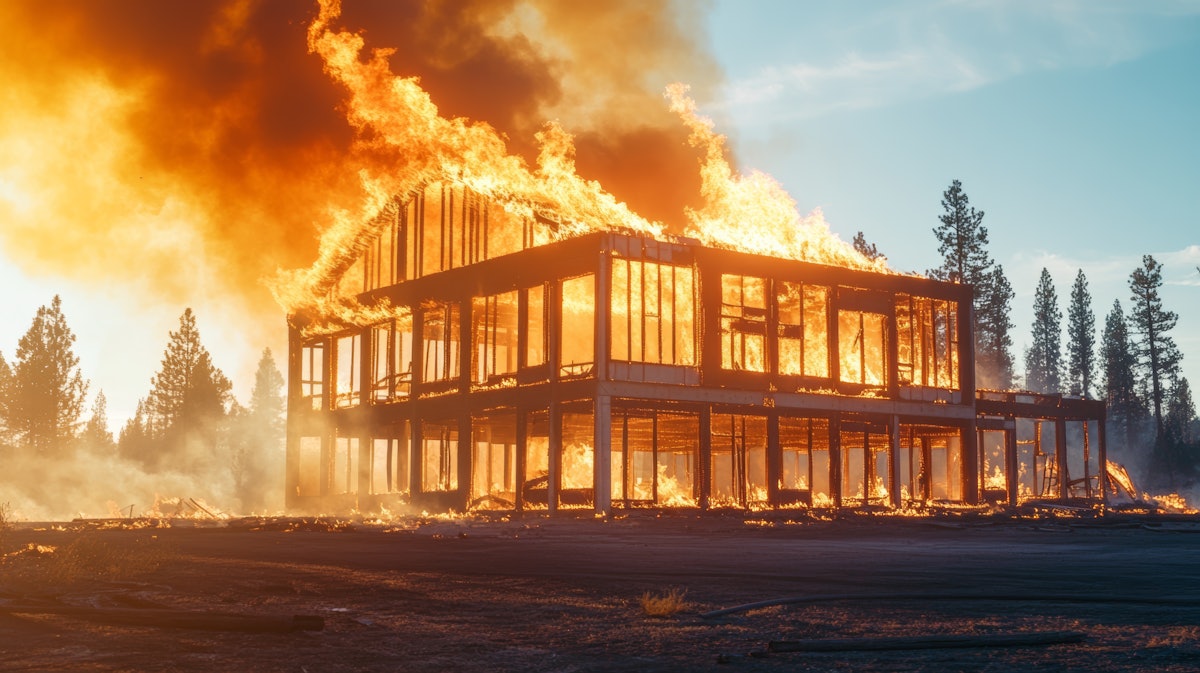The Growing Need for Resilience
Natural disasters are becoming more frequent and severe, posing a higher risk to communities in fire-prone regions like California. Despite some modern improvements in firefighting techniques and early warning systems, the built environment remains susceptible to natural factors. Many homes are constructed with flammable materials, creating a cycle of destruction and rebuilding that uproots families, places immense strain on resources and leads to significant financial losses.
Traditional wood-frame construction has long been the standard in residential building, although this presents a major weakness in wildfire-prone areas. Embers carried by high winds can ignite wooden structures, rapidly spreading fire across neighborhoods. Even homes built to code with fire-resistant treatments may not be enough to withstand extreme fire conditions. This raises an important question: why aren’t we building more homes with fire-resistant materials?
Approaching Fire-Resistant Construction
A shift toward fire-resistant materials can play a key role in reducing property loss and improving public safety. Studies have shown that homes built with non-combustible materials such as steel, concrete, and fire-rated composites are far less susceptible to ignition. During past wildfires, structures with fire-resistant roofs and siding have had a significantly higher survival rate than those made of traditional materials.
Beyond protecting individual homes, fire-resistant construction contributes to broader community resilience. Reducing the number of structures that ignite during a wildfire can slow the spread of fires, giving emergency responders more time to contain them. This decreases the overall damage to neighborhoods and infrastructure in turn, helping communities recover more quickly.
The choice of materials is just one aspect of fire-safe construction. Home design also plays a role in mitigating risk. Rooflines, overhangs, and vents should be designed to minimize the introduction of airborne embers. Windows made of tempered glass can withstand higher temperatures, reducing the likelihood of breakage that allows fire to enter a home. Even landscaping choices are crucial, including defensible space strategies, such as clearing flammable vegetation and incorporating fire-resistant plants, which create natural buffers that help prevent fire from reaching a structure.
Some of the most devastating wildfires in history have been made worse by a lack of fire-resistant construction practices. The rebuilding process in areas affected by wildfires must reflect these lessons, ensuring that communities are not just restored but are made more resilient in the process.
Balancing Fire Safety with Sustainability
In addition to fire resistance, sustainability must be a priority in construction practices. Many fire-prone areas are also experiencing severe droughts, which makes it essential to rethink how water is used in homebuilding. Strategies such as rainwater collection systems, underground water storage and the use of alternative water sources can help ensure that communities have the resources needed for fire suppression while reducing reliance on already strained water supplies.
Materials selection can also impact environmental sustainability. While wood is often seen as a renewable resource, its widespread use in construction has significant drawbacks. Many wood products are transported over long distances, increasing their carbon footprint. Additionally, the loss of homes to wildfires results in massive material waste, with fire-damaged structures contributing to landfill overflow and carbon emissions from reconstruction efforts. Choosing durable, fire-resistant materials can reduce the frequency of rebuilding, ultimately lowering the environmental impact of home construction in fire-prone areas.
Reevaluating water usage is another critical aspect of building for resilience. Many homes in high-risk areas incorporate swimming pools, which, when designed strategically, can serve as emergency water sources. Exploring the potential of water reclamation systems can help communities maximize the utility of existing water resources.
A Call for Industry-Wide Change
Addressing wildfire risk requires a collective effort from architects, builders, policymakers and homeowners. Updating building codes to encourage or require fire-resistant construction in high-risk areas is a necessary step. Some municipalities have already begun adopting stricter regulations, but broader implementation is needed to make a tangible impact.
Insurance incentives could also play a role in driving change. Homes built with fire-resistant materials and defensible space strategies may be less costly to insure, providing a financial incentive for homeowners and developers to invest in safer construction methods. Public awareness campaigns can help educate communities about the benefits of fire-resistant design, encouraging homeowners to make informed decisions when building or retrofitting their homes.
Rebuilding efforts in fire-affected regions present an opportunity to rethink current practices. Rather than replacing lost homes with the same vulnerable materials and designs, communities should consider long-term solutions that prioritize safety and resilience. While no building method can completely eliminate fire risk, incorporating fire-resistant materials and thoughtful design strategies can significantly improve outcomes.
There is also a need for increased collaboration between architects, builders and policymakers. In some regions, outdated zoning laws and building regulations still favor traditional materials over more fire-resistant alternatives. A more contemporary approach that aligns building codes with modern fire science can help ensure that homes are built to withstand the growing threats posed by extreme weather.
As wildfires and extreme weather conditions continue to pose a growing threat, the way homes are built in high-risk areas must evolve. Fire-resistant materials, strategic design, and sustainable construction practices can all contribute to greater resilience. By adopting these approaches, communities can reduce the devastation caused by wildfires and create a safer, more sustainable built environment for the future. The decisions made today will shape the resilience of tomorrow’s communities, and it is essential that fire-resistant construction becomes the new standard in high-risk areas.
View the original article and our Inspiration here


Leave a Reply